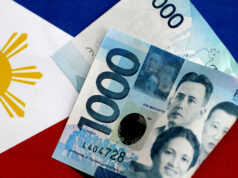Fixed exchange rate ‘dangerous’ for PHL economy, BSP chief says
By Melissa Luz T. Lopez, Senior Reporter
THE BANGKO SENTRAL ng Pilipinas (BSP) will not opt to set a fixed exchange rate for the peso, with its chief calling it a “dangerous” move for the economy.
BSP Governor Nestor A. Espenilla, Jr. said the central bank remains confident that keeping a market-determined exchange rate would shield domestic players from any external shocks, or else run the risk of depleting the country’s dollar reserves just to defend the peso at a certain level.
“Part of our protection and making the economy resilient is deliberately, we are keeping our exchange rate, our peso flexibly determined by the market,” Mr. Espenilla said in a recent speech.
“Some would yearn for the day that we’d like the peso to be fixed — if we say P50, it’s always P50. But that’s a very dangerous path for a small open economy like the Philippines that is constantly being tossed and buffeted by the heavy winds of global developments.”
The peso has been trading above the P53 level against the greenback over the past few weeks, worsened by negative market sentiment towards emerging markets like the Philippines following the Turkish lira’s crisis. Turbulent relations between the United States and China — the world’s biggest economies — are likewise driving currency fluctuations.
The peso averaged P52.1623 versus the dollar from January-July, according to latest central bank data.
This compares to the government’s projection of a P50-53 peso value against the greenback this year. The peso has been described as among the worst performers in the region, having depreciated by around 6.5% so far this year.
“If we commit to something stubbornly against very strong pressures, then we will end up losing our reserves. We’ll end up borrowing more to protect a certain lifestyle,” Mr. Espenilla said.
The country’s gross international reserves slipped to $76.892 billion in July, the lowest level seen in six years as the government settled its foreign debt and as the BSP used the pile to temper sharp swings in the daily peso-dollar rate.
The BSP has been employing a “tactical” approach in managing currency swings in order to control abrupt or steep changes during trading.
“For example for businesses, if exchange rate is guaranteed, they will borrow and borrow abroad because interest rates seem to be low and that creates a path of over-indebtedness. For imports, we want to consume imported because it looks very cheap but in the end it creates deficits,” the BSP governor said.
To add, the BSP chief said exporters will also face problems expanding their operations at a fixed exchange rate regime, as they will not be able to adjust to shifting prices.
“For many good reasons, we allow the peso to move in flexible manner. And that is one of the reasons why we continue to be in stable and resilient position today,” Mr. Espenilla added.
The peso ended Monday’s trading at P53.38 per dollar, stronger than the P53.425 finish last Friday.



